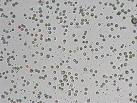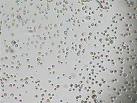Where to begin in finding "why" a compound is cytotoxic. - (Jul/19/2006 )
Hi,
In testing a very unique library of natural compounds, I have come across two compounds which are very potent cytotoxins. How do I go about finding "how" the toxin kills the cells? There are so many potential ways something can kill a cell, that I don't know where to begin. I was wondering if others here have done this or if there is a standard procedure that is followed to begin to solve these particular detective cases.
I havnt done such a study. Its an interesting project. Few suggestions, if it helps !!!
Try to determine which type of cell death occurs - apoptotic or necrotic- upon toxin application.
Apply your toxins on cells and detemine the rate of cell death.
Make cell lysates and try to find which proteins were upregulated or downregulated. This could give some idea which pathway is being activated.
Good Luck !!!
Good luck to you. The company I work for does exactly this type of research and we have a dedicated team and have spent years trying to determining the mechanism of cytotoxicity of novel compounds. It takes a lot of time and the results can be unsatisfactory.
I agree with Scolix - first thing is determine if it's apoptosis or not. Just buy a kit. Then where you go is anyones guess. There could be any number of proteins involved. Microarray might help but is more likely to confuse issues and will give you so many target genes that you won't know where to start.
You could try FACS to see if you are getting cell cycle arrest.
Can you share any more details about the type of compound and any inklings about which pathways it may be affecting?
Hi,
Thanks for the responses. Both compounds exhibit their effects very quickly, so I think I can eliminate apoptotic causes. From what I understand, apoptosis takes 8h or so to show its effects. After 1h application, the cells already exhibit very low MTT readings with my compounds. Upon further thinking about my problem, I've realized that I don't even know if the cells are truly dead; it could be just that the compounds arrest the cell machinery responsible for MTT conversion. The first compound's cells experience lysis in a large portion of the cells, so I think they truly are experiencing necrotic death. But with the second compound, which is even more potent via the MTT assay, the cells seems intact, but get a "hollow" look inside. Higher concentrations of the compound make the cells balloon to an enormous size, roughly four or more times the size of normal cells. Both the hollow and ballooned cells caused by compound 2 have almost no MTT activity to speak of. The ballooning, oddly enough, may be reversible. Upon adding MTT solution once, the cells shrunk back and looked pretty normal. I find that amazing as the cells swell to immense proportions, as you can see in the attached photos.
My plan of action right now is-
1. Perform an LDH assay to check the integrity of the plasma membrane for both compounds. I am sure the first compound will have a highly elevated LDH due to the cell lysis, but I want to know if the membranes are remaining intact concerning the second compound.
2. Is the action reversible? I will allow the compounds to incubate with the cells at levels which normally arrest the MTT assay. Will remove and rinse and see if the cells can spring back to normal respiration levels.
3. Will monitor with time-lapse high resolution microscopy to see if anything jumps out at me as different between treated and untreated cells. Will also try to see what is disappearing, causing the hollow look. Will monitor after washout and see if the second compound's cells lose the "hollow" look.




Confirm apoptosis or necrosis using a kit or something else. Its not sufficient to say that since cell death is very quick, its going to necrosis. Mostly likely necrosis but confirm anyway. Reviewers will ask for it.
I've recently seen a poster that talk about the ballooning phenomenon you've seen (or something similar). It was something to do with DNA damage by an alkylating agent. It's in one of the labs at UCL. I'll go and have another look at it on Monday.
Doc Martin:
Please do. It would be very interesting to me if this is a DNA alkylating agent.
Thanks!
If you see this killing event real fast, then membrane action is more likely.
Can you provide more info on this:
How fast the toxicity appear? within 1 hr?
At what dosages are these chemicals effective? um-mM?
are they amphiphilic and is the concentration close to the cmc if they are?
Can you provide more info on this:
How fast the toxicity appear? within 1 hr?
At what dosages are these chemicals effective? um-mM?
are they amphiphilic and is the concentration close to the cmc if they are?
The treated cells have greatly depressed MTT values after 1hr. I will know more about the membrane integrity after doing an LDH assay. Since we are dealing with extracts right now rather than one compound, I don't know exactly what molar range I am dealing with at the moment. I would assume at least uM or maybe even nM range. I don't know about the precise hydrophobic/hydrophilic nature of the compounds right now as well either, as we haven't isolated the exact compounds responsible yet. We are close, though.
The compound on the poster was an interstrand crosslinking nitrogen mustard.
Following giant cell formation there was incomplte cytokinesis.
